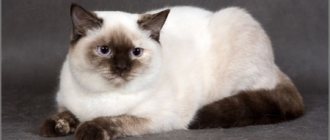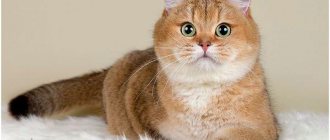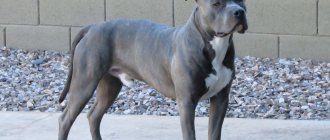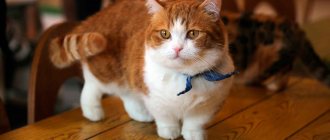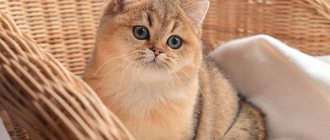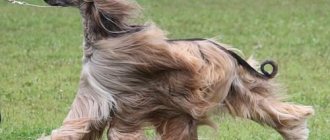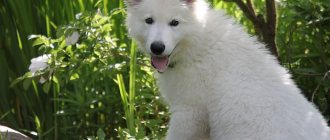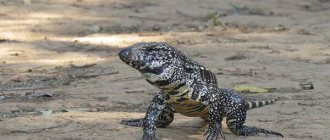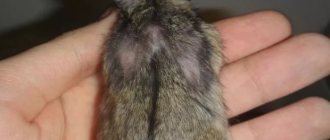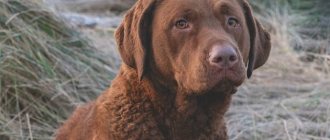Bi-colored kittens with black and white markings are also called tuxedo or piebald cats. Some people mistakenly believe that tuxedo cats are a special breed.
Tuxedo refers to the distinctive markings on the coat that make it look like someone is wearing a formal tuxedo. Mixed breed domestic cats, also called moggies, may also have black and white markings.
Black is a common coat color in cats because it is the dominant gene. Black and white cats have a white spot gene that prevents colored melanocytes from migrating into these areas.
Here are 10 popular types of cats that can have black and white coats, as well as other potential coat colors and markings.
Maine Coon
The Maine Coon is one of the largest cat breeds and is known for its incredible affection. Combined with their distinctive appearance and shiny coat, they are one of the most popular breeds around the world.
Maine Coons are usually tabby, but they come in a variety of colors and patterns, including black and white. These cats usually get along well with all family members, including respectful children and dogs.
They are loyal and affectionate, but not too needy. Maine Coons are known to be expert mousecatchers and may not be suitable for families with small, furry pets.
Varieties of color
Although all black and white cats appear identical, this is absolutely not the case. There are 3 main varieties of this color:
Wang
With this color, the body of a black and white cat is covered with light hair with several small charcoal marks on the head, muzzle and near the tail of the animal.
Harlequin
Black and white cats with this coloration have light fur with numerous large dark markings. The charcoal pattern can combine stripes, small patterns and large areas of dark fur. The main thing is that the black spot is uniformly colored and does not have white hairs.
Bicolor
The body of an animal with this coloring is covered with blue-black fur with snow-white spots of different shapes and sizes. In the classic version, a bicolor cat has a “tie” in the chest area, as well as light markings on the sides, face and head.
Cornish Rex
The black and white Cornish Rex impresses with its famous dense, curly rows of coat; wide set large ears; and a slender physique. They are sometimes called greyhounds from the cat kingdom.
Energetic and sociable, this breed thrives in company. The Cornish Rex is an intelligent cat that can be taught many impressive tricks, some of which can help as therapy animals.
Color ratio
According to another, more detailed classification, black and white (b/w) color is divided into several types:
- coal-black background without clear light areas with unevenly interspersed white hairs;
- with a charcoal background and small white areas in the neck, chest or lower limbs;
- with a large, clearly defined white patch of fur on the cat's throat;
- with a mark that flows from the chin to the neck of the animal;
- with a uniform light area that starts from the chin and covers the chest, abdomen and all four limbs;
- with white bottom and sides, as well as large black markings on the back, back of the head and tail of the cat;
- with a charcoal tail and small black spots on the back;
- residual black - with several small dark markings on head and tail;
- dominant white - black pigment is present exclusively at the gene level.
Manx cat
Like the Cornish Rex, the Manx is dog-like. They are usually playful, sociable, even-tempered and energetic. Manx cats are also intelligent and highly trainable.
This breed is usually tailless, but they sometimes have a short stump. They come in a variety of coat colors, including black and white. This short-haired variety can shed heavily, and with their rounded and shorter back, they may be more susceptible to spinal problems. These cats are also famous for their mousecatching skills.
The power to heal
According to legend, if a ginger cat is next to a sick person, even after surgery, that person will recover sooner. Even today, many owners of such animals can tell about the healing abilities of animals.
It is a generally accepted fact that a cat with a fiery coat color is a real charge of positivity and optimism. By creating an appropriate life-affirming mood, it literally works wonders, truly becoming an excellent medicine. It won’t be difficult for her to relieve her owner’s stress. And for those who suffer from migraine attacks and pressure changes, the benefits that fire cats can bring are priceless.
Munchkin
This breed gets its name from its shorter than average legs, which are due to a natural genetic mutation. Munchkins come in a variety of color combinations, including black and white.
Due to their short legs, the Munchkin may need extra help when it comes to grooming hard-to-reach areas. The debate revolves around the ethics of continuing to breed this cat with its abnormal mutation and the potential correlation between specific health problems and this body shape.
Content
Keeping Russian cats is no different from proper care, but each breed has its own nuances. Some breeds require a predominance of certain nutrients in the diet, while others require rinsing when caring for their eyes. Fluffy and semi-long-haired animals require attention to their fur: combing and periodic water treatments. Individual animal care. It depends not only on the breed, but also on the following factors:
- age;
- sterilization/castration or lack thereof;
- past illnesses.
Nutrition
Meals must be regular and balanced; you cannot feed the animal exclusively with dry food. Food must be nutritious and energetically valuable. The diet should contain a lot of protein (found in meat and milk), 20% fat is allowed, and there should not be a lot of carbohydrates. The diet of spayed/neutered animals differs from the diet of ordinary cats. So, it must contain minerals and vitamins pre-selected by a veterinarian.
The diet should include the following components:
meat – rich in amino acids and nutrients; Do not eat fatty meats like pork;
fish – rich in phosphorus, calcium and protein;
dairy products should be given with caution, as some breeds are lactose intolerant; Cereal porridge mixed with vegetables will be useful; to keep the animal interested, you should mix in meat or fish.
Hygiene
Cats are excellent at maintaining personal hygiene, but some breeds require special care. Cats with longer hair require daily brushing and occasional bathing. The ears require attention: they should be periodically inspected and cleaned, and ear drops should be instilled to prevent mites and ear diseases. You should wash your eyes with a moistened cotton pad in the morning.
Oriental shorthair cat
The Oriental Shorthair is often confused with its Siamese cousin and is therefore a separate breed. Unlike Siamese, these cats have green eyes and come in a variety of colors and patterns, including black and white.
Like the Siamese, the Oriental Shorthair tends to be inquisitive, chatty, and even-tempered. While no cat is truly hypoallergenic, this breed is known to produce less Fel D1 protein, which can cause allergies. They have short, single coats, which means these cats sense the cold and prefer a cozy, draft-free home.
A bit of genetics
Two basic colors are responsible for the entire rich color palette of cat colors (except white):
- black;
- red.
They are formed under the influence of the pigment melanin, which includes two chemical varieties:
- zumelamine - gives the coat a black color;
- pheomelamin - produces red color.
The genes responsible for the appearance of red (O - orange) or black (o - not orange) are located on the X chromosome:
- cats have two X chromosomes (XX);
- Cats have one X chromosome and one Y chromosome (XY).
The kitten inherits one chromosome from each parent: from the mother - X, from the father - X or Y.
Just like in humans, female cats have a set of XX chromosomes, and males have XY chromosomes.
Three colors that a cat can have:
- OO - red;
- oo - black;
- Oo - tortoiseshell.
If both X chromosomes contain O, the cat will be red, if O, it will be black, and if Oo, the cat will be two-colored.
For a cat that does not have the O gene on the Y chromosome - OY or oY. Accordingly, cats can only be red and black. Tortoiseshell cats appear only as a result of a gene failure and are almost always sterile.
If the parent X chromosome carries the O gene, the cat will be red, and if O, the cat will be black.
The white color stands apart. Rather, it is not even color, but the absence of pigment.
Genetics of black and white color
The black and white cat's coat is called black bicolor (two colors). Bi-colored cats are sometimes called meglais, from the English "magpie."
The bicolor color was recognized by European associations in 1969. After this, an active period of breeding bicolor cats began. Before this, pets with double colors were considered a genetic defect.
The dominant S gene is responsible for spotting in cats. Sometimes it works so actively that the white spots on the coat merge into one continuous spot, and the animal becomes completely white. If the gene is not expressed in full force, two-color colors are obtained.
Piebald color can be inherited, with the location and size of the spots changing.
Even in the same litter, kittens with the same bicolor color are not born. Each fur pattern is individual, just like the papillary pattern on a person’s fingertips.
To get a meglaye litter, breeders mate two bicolor parents or a black and white cat with a tortoiseshell cat.
Persian cat
While the pure white Persian is often the most photographed and highly prized variety of this popular breed, they also come in other colors, including black and white.
There is no mistaking this breed for their long, thick coat; large bright eyes; and crumpled faces. Their popularity also stems from their laid-back, low-energy, and cozy nature.
They are not known as one of the smartest or most trainable cats. The Persian's long, shiny coat requires daily grooming. It tangles easily and causes discomfort if neglected.
Plain (solid, solid)
The monochrome uniform coloring of Scottish cats is considered classic by breeders. The solid or solid color of the animal implies the absolute exclusion of any inclusions, small marks and specks of a different color. The tone is rich, even along the entire length of the coat.
The most common used to be considered blue plain Scots. But today among the representatives of the breed there are many other variants of solid colors.
White
A Scottish cat with snow-white fur (without yellowness) looks luxurious. Possible eye colors are blue, amber, copper. According to the standard, eyes of different colors are allowed. The paw pads and nose are light pink.
Kittens may have markings of a different shade, which disappear after the first coat change. By the age of two, the coat of a white Scot should be crystal clear, without spots of a different color.
Black
The black cat has expressive yellow eyes. The nose and paw pads practically blend into the main color of the animal.
On the shiny bright coat of the Scottish beauty Ebony, 2-3 hairs of contrasting white color are allowed. The presence of large red or brown marks is not provided for by the standard.
Chocolate
The brown Scottish cat, also called chocolate, looks noble and impressive. The color of the coat contrasts with the animal's yellow, golden or copper eyes. The nose and paw pads are also dark brown.
Lilac (lavender)
The monochromatic lilac Scottish Fold has a gentle gray tint that smoothly turns into cream. The nose is slightly brownish, the paws on the bottom are the same color as the coat, in harmony with the main color of the pet. This lilac-lavender color goes well with eyes of copper, amber or orange shades.
Red (red)
Red or ginger color is a rare and valuable color of the Scots breed. The fiery edge is combined with burning amber irises. Pads and nose to match the dominant color.
The tail of kittens and adult animals is not very evenly colored. This deficiency does not disappear with age and is allowed by the standard. And the presence of marks on the head and limbs that remain after reaching the age of two are considered a deviation from the norm.
A red Scottish straight-eared cat can give birth to kittens not only with erect ears, but also with ears pressed to the head.
Cream
The cream or peach fold cat is infinitely elegant and beautiful. The delicate background of light fur, bright golden eyes and a pinkish nose give the pet an irresistible appearance. The pads on the paws are also pink. An animal with this color is similar to a red Scotsman, but its coat color is a shade lighter.
A peach fold kitten may have a blurry, fuzzy pattern on its paws and tail that does not disappear with age. This is not critical for a purebred pet, but leopard markings are absolutely unacceptable.
Faun (deer)
There is another unique color of Scottish fold cats with an interesting name - fawn, which means “young deer”. The nose and pads on the paws of these beauties are beige-pink.
Cinnamon
Cinnamon is a lighter and more delicate color than chocolate, but darker than red. The nose and paw pads of such animals are brown, beige or pink.
Blue color (blue)
The gray or blue Scottish cat has very beautiful amber eyes. The coat tone of a purebred pet can belong to any range of gray - from the lightest (blue) to completely dark (blue). At the same time, each hair is saturated and well colored, without streaks.
The nose and pads practically do not differ in color from the plain coat.
A gray Scottish Straight cat may be marked with a few streaks and drawings in childhood. But as they grow older, these color flaws go away.
Scottish fold cat
Known for its small, curled ears, the Scottish Fold looks quite mischievous. These cats are usually not mischievous at all.
Known for being laid-back and friendly, Scottish Folds typically do well around other pets and respectful children.
This breed is at greater risk of developing degenerative joint disease, which can affect the development of cartilage and bones.
Their thick coat requires regular grooming to avoid problems with fur balls. The black and white combination is just one of the many colors the breed can have.
Rules for caring for black fur
It is believed that blackies need special care. This is partly true, since the black color easily fades in the sun, forming reddish tan marks. Therefore, your pet should not be allowed to stay in direct sunlight for too long.
A prudent owner will take care of the animal’s diet, including meat, eggs, cat grass and various dietary supplements.
Otherwise, the following rules of coat care must be observed, taking into account the characteristics of each breed:
- the thick undercoat of Manx cats requires careful combing; after completing the procedure, the cat’s fur can be smoothed with a comb; these animals should be bathed no more than twice a year using special shampoos and conditioners that enhance shine;
- the fluffy Maine Coon, short-haired Curl and Bombay need to be brushed with a brush-comb at least once a week;
- long-haired Persians and Siberians require especially careful care - cats should be combed daily, first with a wide-tooth comb, then worked through the fur with a slicker brush, and at the end of the procedure, with a fine-toothed comb; animals can be washed up to four times a year; after water treatments, the wool should be treated with a special product to make combing easier;
- After brushing, a curly Devon Rex must be stroked with wet hands: then the curly hairs will form neat waves by themselves.
There are no great difficulties in care. If the owner sincerely loves his pet, he will easily find time to select a diet, comb the fur, communicate and play. Well, your furry pet will reciprocate 100% and will delight you not only with its playful mood, but also with its luxurious appearance.
See the characteristics of Bombay black cats in the video below.
Siberian cat
Siberian cats have a very thick, semi-long-haired, triple-haired coat. They need this fur to survive in the frosty forested subarctic regions of Siberia. The breed is growing in popularity due to its affectionate, playful nature and striking appearance. Siberians are active and smart and need communication so as not to get bored.
Their coat is not prone to tangling, but sheds heavily every two years. The brown tabby is the most common pattern of Siberians, although they come in a variety of colors and patterns, including black and white.
Red devils and timid white angels
No matter how strange it may sound, there is an opinion that the character of a cat is in some mysterious way connected with its color. Moreover, even some breeders and veterinarians think so, that is, people who, by definition, deal with a large number of these same cats.
Table: the estimated character of a cat depending on its color
| Cat color | Character |
| Black and white, gray, black tabby | Stress-resistant, the best possible |
| Calico | Demanding, independent, dedicated |
| White (with blue eyes) | Timid |
| Colorpoint with brown marks | Quite aggressive |
| Ginger | Brash, capricious, vindictive |
| Silver and brown spotted tabby | Nightmarish beyond description |
| Classic brown tabby or mackerel | Affectionate, flexible, playful |
| Blue (tabby or solid) | Friendly, contactable |
Ordinary cat lovers also notice some patterns.
The life of the author of this article at different periods of time was also connected with cats: a chocolate-point Siamese, a black-and-white bicolor of “noble” blood, and a Canadian Sphynx. And this is what the author has to say about this:
- Siamese was pure evil, an absolute misanthrope and an extreme dirty trick; he devoted his entire life to a fiery struggle to reduce the human population in a single apartment (and would still have achieved success if the duration of a cat’s life had not been significantly less than the duration of a human life);
- the black and white mongrel cat had a remarkably affectionate and devoted character and manners of a true gentleman: from the moment when True Love happened in his life, there was no such tasty treat that he would not take to the lady of his heart;
— the sphinx is a completely different story; It was this animal that cared so sincerely and openly about its owners that it did not consider it necessary to reveal its character to them at all.
However, even having two matches with the table out of three possible, the author will refrain from generalizations, since he is absolutely sure that assessing the character of a cat by its color is as futile as assessing the mental abilities of a woman by the color of her hair.
Turkish Angora
The elegant, long-haired Turkish Angora was once associated only with white skin color. They are still most often found in this color and come in many other variations, including black and white.
Turkish Angoras are generally best suited to family homes, where they spend most of the day. Sociable and affectionate, they need a lot of attention and enrichment.
They are more active than regular cats and can become mischievous if they get bored. Unlike most cats, this breed often loves to swim and play in the water.
Breeds
A tortoiseshell kitten can be born to both a yard and an elite cat. True, not all breeds have this color as the norm and are officially recognized.
British and Scottish
Tortoiseshell cats are often found in these popular breeds. True, the birth of babies with variegated colors does not cause enthusiastic emotions among breeders due to the fact that individuals with such a coat are usually not popular with experts and are not highly valued at exhibitions.
In the British breed, there are about 80 color variants, which are included in the tortoiseshell group: chocolate-peach, cinnamon red, beige-blue, black-red, etc. Among the Scots, three-color cats of the “torty” type with bright, rich shades are more common.
Siberian and Norwegian
Tortoiseshell Siberians usually have blurred, weakened pigment. But their coat often has a tabby pattern.
Norwegian Forest wool has a richer color. The breed often includes cats of the “tortoise-on-white” type. Due to the long and dense canopy, Norwegian forest trees have unusual layers of shades and original color transitions.
Turkish Angora
Although snow-white color is preferred in the breed’s homeland, the standard allows for the existence of tri-colored individuals. Among Turkish Angoras, the “tortoiseshell and white” type is often found. Moreover, the colored areas of the fur have bright and rich tones. And the light areas of the tortoiseshell Angora cat are painted boiling white.
Cornish Rex
Representatives of the breed have delicate curly hair, which can be colored tortoiseshell. Cornish Rex cats with the tortoiseshell and white color variation are considered especially valuable. Such representatives of the breed have a light underpart, and the upper part of their body is covered with red-black spots.
Bobtails
The standards for bobtail cats also include a tortoiseshell color. These bobtails look very unusual and resemble short-eared hares in a colorful coat.
Sphinxes
The hairless tortoiseshell cat has long ceased to be considered exotic. In different breeds of sphinxes, individuals with red-black and blue-cream color combinations are often found. But cats of the “tortoiseshell and white” type are born much less frequently.
Orientals
This oriental breed has many color options, among which the tortoiseshell color stands out. She is characterized by more than fifty varieties of motley fur coat. Warm or cold tones, checkerboard or patterned patterns are allowed on the fur of tortoiseshell cats of the Oriental breed.
Maine Coons
These huge shaggy cats attract attention with their spectacular appearance. And the tortoiseshell color adds mystery to them
Most often in the breed there is a combination of charcoal and bright red color with the addition of white.
Persian
The tortoiseshell coloration of cats with long hair looks very interesting. Red (cream) and charcoal (lilac, chocolate or gray) spots are evenly distributed on the fur coat of tricolor representatives of the Persian breed. Moreover, areas with long hair are painted in brighter colors. And areas with short fur are lighter tinted.
Outbred
Most often, tortoiseshell kittens are born from yard cats of unknown origin. They are distinguished by good health and good heredity.
